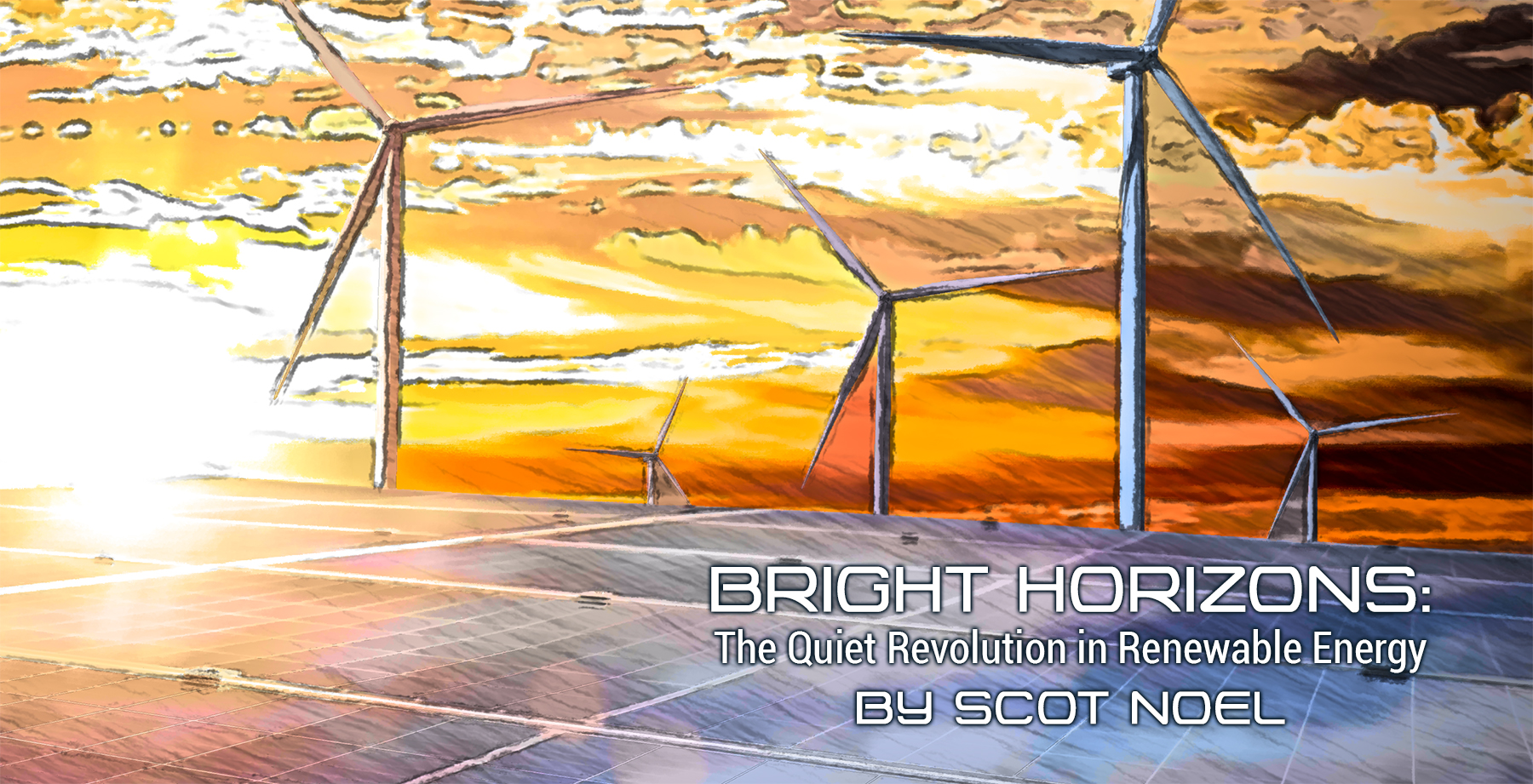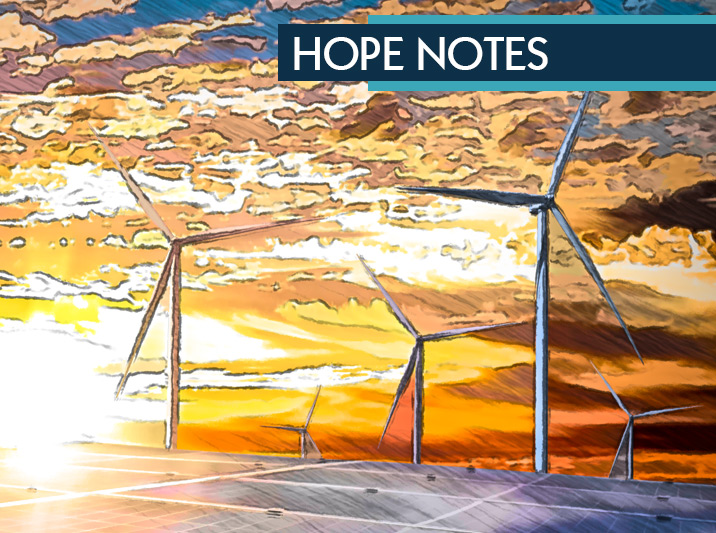 You might not know it from the daily grind of bad news, but clean energy is making progress, not just in the US, but around the globe. Renewable energy projects are changing how the world is powered, and if you haven’t heard, let’s go over a few recent developments.
You might not know it from the daily grind of bad news, but clean energy is making progress, not just in the US, but around the globe. Renewable energy projects are changing how the world is powered, and if you haven’t heard, let’s go over a few recent developments.
In 2024, global clean energy capacity increased by about 585 gigawatts, with solar contributing approximately 400–450 gigawatts and wind around 110–120 gigawatts, based on preliminary projections. Those numbers aren’t just figures— they mark a growing trend in how the energy of the future is being produced.
Let’s put that in perspective. The estimated range of 550–600 gigawatts of new clean energy in 2024 equals about 6–7% of the world’s total electricity capacity. That’s nothing short of amazing for someone like me, who can remember shoveling coal to heat the home I grew up in.
Even more remarkable, renewable energy from all sources, including large hydro projects, now account for approximately 30% of global electrical generation, a pretty nifty milestone in the transition to clean energy.
By 2030, annual clean energy additions could reach 700–1,000 gigawatts, representing roughly 8–11% of current global capacity.
At this pace, renewables might supply 43–50% of global electricity by 2030! If policy developments and grid upgrades continue on pace, this rapid growth would mean that every other kilowatt of new power comes from wind, solar, hydro, or storage, reshaping grids and economies worldwide.
Advancing Technologies
Solar module costs have declined significantly, reaching approximately $0.15–$0.20 per watt in recent years, with further reductions expected as technology and industrial scaling continue.
Wind energy is also moving forward, with breakthroughs in blade materials, turbine design, and control systems—particularly for offshore installations— boosting both output and reliability.
And the third leg of this renewable triad is energy storage. The biggest drawback of renewables is that they only work when the sun shines and the wind blows. But batteries capable of banking that power output change the game entirely.
Global battery storage capacity reached approximately 23 gigawatts by the end of 2023, capable of storing significant energy to stabilize grids and help power millions of homes.
The U.S. Energy Information Administration expects about 18.2 GW of new grid-scale battery storage to come online in 2025, rising from 12.0 GW added in 2023, smoothing out supply and keeping lights—and factories—running even when the sky is overcast or the air is still.
Milestones That Matter
In September 2024, the UK closed its last coal-fired plant at Ratcliffe-on-Soar, marking the end of 142 years of coal power in the country. Over the past decade, broader shifts to renewables and cleaner fuels reduced power-sector emissions by approximately 74%.
UK families now enjoy cleaner air, lower health bills, and fewer coal ash hazards.
In the US, wind and solar contributed approximately 15–16% of electricity generation in 2024, approaching or matching coal’s share of around 15–16%, a significant shift from coal’s dominance in past decades. Back in 2001, coal made 51% of our electricity. This shows how fast clean tech, smart laws, and good planning can reshape power.
China kept pace too. In May 2024, renewables topped 44% of its electricity. By building big, China drove down costs for solar and wind around the world.
Innovation Beyond the Expected
Clean energy isn’t just solar and wind. MIT teams built organic redox flow batteries that store more power, last longer, and cost less than lithium-ion cells.
AI also boosts renewables. Smart systems predict weather and demand, spot equipment issues, and tweak settings to keep turbines and panels running at peak performance.
When it comes to hydro power, new pumped‐storage projects use underground reservoirs to store excess wind and solar energy. Small “run‐of‐river” dams now generate clean energy without big lakes. And marine turbines are tapping tidal and wave forces. Together, these advances make water a more flexible partner in a clean‐energy future.
New perovskite* solar cells have achieved over 25% efficiency in lab settings, surpassing some silicon panels’ 20–22% efficiency. While promising for lower costs in the future, they are not yet widely commercialized due to stability challenges.
And finally, fusion power is edging closer: experiments at Lawrence Livermore National Lab achieved a net energy gain in fusion reactions, a key milestone. While practical fusion power remains likely decades away, these advances signal its potential as a clean energy source in the future.
The Human Element
Renewables show our values are shifting. People now demand energy that protects health, the planet, and future generations.
Smart policies drive this change. The U.S. Inflation Reduction Act is projected to support 300–500 gigawatts of new renewable capacity by 2030, significantly expanding the nation’s clean energy infrastructure.
China’s 14th Five-Year Plan puts clean energy at its core. The UK’s Net Zero Strategy aims to cut emissions 68% by 2030. The EU’s “Fit for 55” plan targets a 55% cut from 1990 levels by 2030. Africa’s Renewable Energy Initiative seeks 300 GW of new clean power by 2030. These plans blend green goals with growth.
But real progress happens locally too. Homeowners add solar panels. Neighborhood co-ops launch community solar. Businesses set clean-energy targets. These everyday actions show that future change comes from all of us, not just governments.
Challenges and Choices
We still face big challenges. Grids need smart upgrades to handle variable power. Laws must ensure everyone shares the benefits. Workers in fossil industries need training and support.
Still, change is happening. Coal plants are closing early. Renewables keep beating forecasts, and prices keep falling. Every solar farm, wind turbine, and storage project proves a cleaner, fairer energy future is within reach.
*Perovskite solar cells are a newer type of solar technology that use perovskite-structured compounds (typically lead or tin halide-based materials) as the light-harvesting layer. They’re notable for their exceptional light absorption efficiency, low manufacturing costs, and flexibility compared to traditional silicon solar cells.












